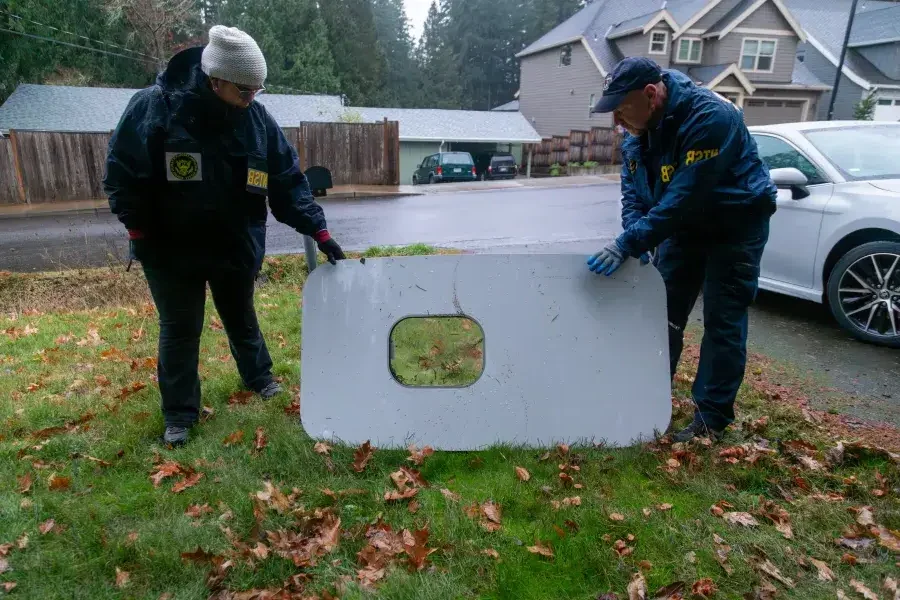In the aftermath of the alarming incident involving an Alaska Airlines jetliner, wherein a panel malfunctioned shortly after takeoff, the investigation has uncovered critical details about the origin of the faulty component. Jennifer Homendy, Chair of the National Transportation Safety Board (NTSB), disclosed that the panel in question was manufactured in Malaysia by Spirit AeroSystems, a major supplier to Boeing. The focus of the inquiry now extends beyond the incident itself to scrutinizing the production processes at Spirit AeroSystems and the subsequent installation of these components on the aircraft.+
This revelation has sparked a broader examination of Boeing’s intricate global supply chain, which, over the years, has witnessed a significant outsourcing of manufacturing. Questions are being raised not only about the specific incident but also about the overall quality control measures and safety protocols adopted by Boeing and its suppliers. Industry experts and regulators are keenly interested in understanding the comprehensive procedures governing the production of critical components, particularly those supplied by Spirit AeroSystems.
Amidst the ongoing investigations, Boeing’s CEO, David Calhoun, took proactive measures by visiting Spirit AeroSystems’ headquarters and factory in Wichita, Kansas. Calhoun underscored the commitment of both companies to collaborate closely in addressing the identified issues and ensuring the highest standards of safety. During a town hall meeting with approximately 200 Spirit employees, Calhoun emphasized a collective commitment to learning from the incident and applying those lessons to enhance safety across all collaborative projects between Boeing and Spirit AeroSystems.
The regulatory response to the incident has also been robust. Federal Aviation Administration (FAA) Administrator Mike Whitaker and NTSB Chair Jennifer Homendy dedicated two hours to briefing members of the Senate Commerce Committee. While both investigations are still in their early stages, Senator Jerry Moran stressed that consequences would follow once the inquiries conclude. The FAA, in tandem with its ongoing investigations, has announced a thorough review of information obtained from inspections of 40 identical Boeing 737 Max 9 jets – the same model involved in the Alaska Airlines incident. The objective is to develop a meticulous maintenance process before allowing these planes to resume passenger operations.
In response to the incident, Alaska Airlines and United Airlines, the only other U.S. carrier operating the Max 9, conducted inspections that revealed loose hardware in door plugs of other planes. Consequently, both airlines took the precautionary measure of grounding their Max 9 fleets, resulting in the cancellation of hundreds of flights.
As the aviation industry grapples with the implications of this incident, collaborative efforts between regulatory authorities, aircraft manufacturers, and suppliers are paramount. The commitment to transparency, accountability, and continuous improvement voiced by industry leaders is crucial in not only addressing the challenges posed by this unfortunate event but also in implementing industry-wide reforms to enhance the safety and reliability of air travel. The aviation community must work collectively to restore public confidence and uphold the highest standards of safety in the wake of this incident.

